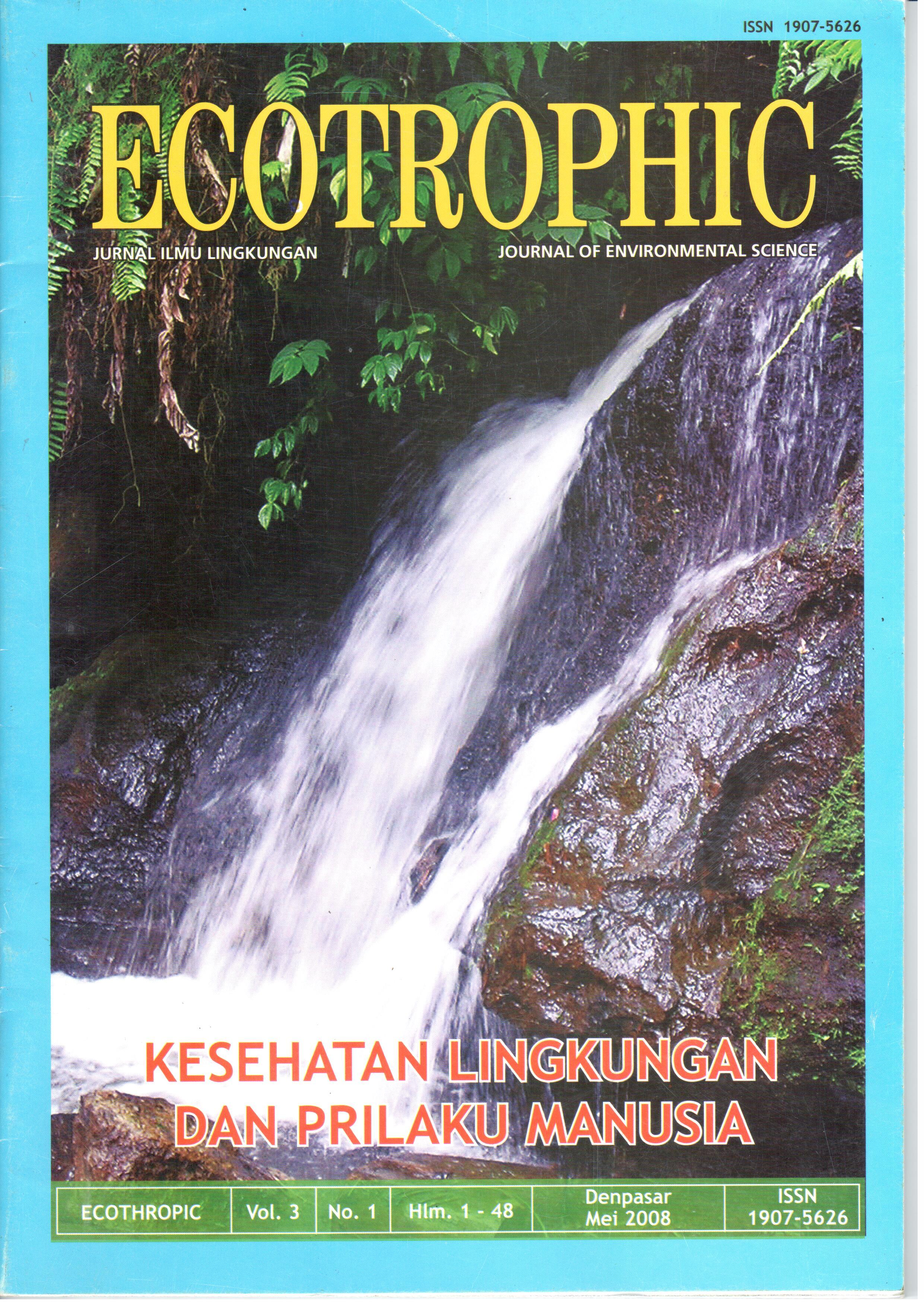PEMANFAATAN SEDIMEN PERAIRAN TERCEMAR SEBAGAI BAHAN LUMPUR AKTIF DALAM PENGOLAHAN LIMBAH CAIR INDUSTRI TAHU
Abstract
Tofu industries are food industries which use a lot of water, both for operational system and as a basic material for production.Tofu industries produce liquid sewage which contains high organic subtances. Liquid sewage of tofu industries is one of the sources of
contaminants, so that it is needed to have an appropriate waste processing. In order to overcome liquid sewage problem, a waste
processing is to reduce and eliminate dangerous materials and pathogenic microorganisms. Biological treatment is the commonest way in
handling the liquid waste from food industries. One of the biological processing that can reduce the contaminants content in liquid
industrial sewage is activated sludge. This activated sludge can also metabolize and break up the contaminants in the sewage and this
processing uses sludge.
This research was carried out in order to know the growth rate of microbe biomass in activated sludge from 3 types of sludge
taken from the ditches of the tofu industries, the sludge taken from Pesanggaran Slaughterhouse and the sludge taken from Badung River
which were composed into 4 compositions and then were seeded, than tested to get 4 sludge composition in order to reduce COD in tofu
industrial sewage. The parameters used were physical and chemical views. This research was done by measuring the changes in VSS
value of the four sludge compositions which were seeded and the COD of the four tested sludge compositions.
This research used factorial Randomized Completed sampling that consisting of 2 factors and three repetitions, that is the first
factor was composition sludge and the second one ws incubation period and then were analyzed by using descriptive comprative analysis
and uni –variant analysis.
The result of this research shown that the best sludge composition used as activated sludge was the sludge composition taken
from the ditches of tofu industries was 50 %, the sludge taken from Pesanggaran Slaughterhouse was 25% and the sludge taken from
Badung River was 25 % with had VSS of micobe biomass growth of 2265 mg/L and was able to reduce COD of tofu industrial liquid
sewage up to 46.645 mg/L.
Downloads
Download data is not yet available.
How to Cite
SUDARYATI, Ni Luh Gede; KASA, I Wayan; BUDIARSA SUYASA, I Wayan.
PEMANFAATAN SEDIMEN PERAIRAN TERCEMAR SEBAGAI BAHAN LUMPUR AKTIF DALAM PENGOLAHAN LIMBAH CAIR INDUSTRI TAHU.
ECOTROPHIC : Jurnal Ilmu Lingkungan (Journal of Environmental Science), [S.l.], v. 3, n. 1, nov. 2012.
ISSN 2503-3395.
Available at: <https://ojs.unud.ac.id/index.php/ecotrophic/article/view/2480>. Date accessed: 16 dec. 2025.
Issue
Section
Articles
Keywords
Tofu industrial sewage, activated sludge, COD, VSS and sludge


